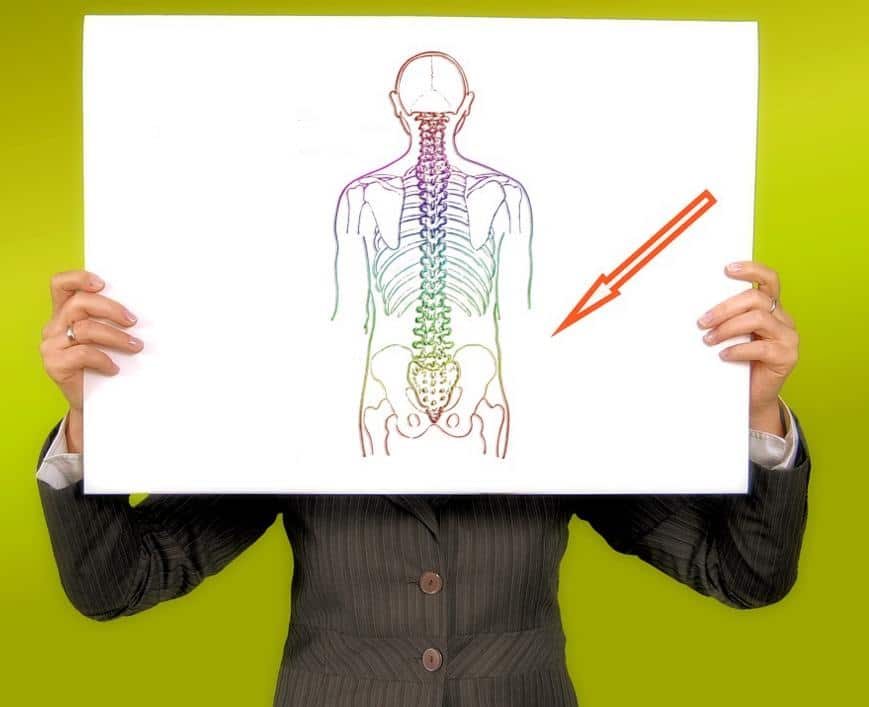What is a Sacral Pressure Ulcer?

Pressure ulcers, also known as bedsores or decubitus ulcers, are skin injuries that develop most commonly on bony areas of the body. A sacral pressure ulcer is one of the most common types of these injuries. The sacral region is the area of the lower back near the spine. “Sacral” refers to the sacrum which is the tailbone, or the triangular pelvic bone where most people rest their weight while sitting.
No matter the location on the body, pressure ulcers all form the same way. That is, the area where the sore forms has been under pressure and friction long enough to interrupt the blood flow to the skin. Once the healthy blood flow is gone, the skin will begin to die, deteriorate, and break apart. Once that happens, there is an open wound that, without timely treatment, can progress into deeper layers of tissue.
What are the Risk Factors for a Sacral Pressure Ulcer?
The damage that causes pressure ulcers can occur after only a few hours of unrelieved pressure on the skin. Without the pressure, there would be no sore. As such, there are certain risk factors that tremendously increase the chances of a sacral pressure ulcer developing.
Mobility Problems
The people who are at the highest risk of developing a pressure ulcer are those who cannot move their own limbs to relieve the pressure on their skin. Complete immobility is the highest risk factor for developing pressure ulcers, especially in the sacral region. A bed-bound patient spends the vast majority of each day with pressure on the sacral region.
Inability to Communicate Discomfort
Many patients who develop serious pressure ulcers have advanced wounds due to a lack of ability to recognize or communicate their discomfort. In some cases, there is nerve damage in the affected area that causes the patient to not realize there is an injury. In other cases, the patient does not have the mental capacity or the physical ability to communicate their pain.
Moisture
Patients who are incontinent, or who sweat heavily are at higher risk of developing a pressure ulcer. When moisture builds up on the skin, any pressure or friction is more damaging. Imagine how your skin feels after removing a band-aid. It is soft, tender, and wrinkly. Your skin health has been compromised due to a lack of adequate oxygen and blood flow.
Friction and Shear
Patients who have difficulty moving on their own experience more friction and shear from bed and chair surfaces than patients who can move themselves. Obese patients also experience more friction and shear than other patients. The friction on bony areas of the body like the sacral region encourages break down of the skin more quickly. This is especially so after healthy blood flow to the area is lost because of pressure.
Nutrition
Patients with poor nutrition not only develop bedsores more easily, but tend to experience pressure ulcers that are much more severe than a well-nourished individual. Without the fuel the body needs to stave off infection and maintain healthy circulation, the chances of developing a sacral pressure ulcer are much higher.
Risk Assessment Tool
Caregivers and medical professionals use these risk factors – mobility and activity, nutrition, moisture, decreased sensation, and friction – to assess the likelihood that a patient will develop a pressure ulcer. The formal assessment is called the Braden Risk Assessment Scale.
Each of the categories in the Braden Scale has a numeric value that doctors use to assign a score to each patient. The score then determines their risk of developing a pressure ulcer. The scale is from one to 23, with 23 indicating a lower risk of developing a pressure ulcer. Any adult who scores lower than 18 on the Braden Scale is high risk.
A score lower than 18 indicates that the patient needs specialized care to prevent pressure ulcers. Caregivers must make sure the patient never puts pressure on one part of the body long enough for the tissue to die. For patients who are at high risk of developing pressure ulcers, preventative care is the standard of care.
How Serious is a Sacral Pressure Ulcer?
Not all pressure ulcers are serious or life-threatening when they are diagnosed. Doctors classify pressure ulcers by stages based on the depth and severity of the wound. The four stages of pressure ulcers are:
- Stage 1: The skin is red and irritated, but still intact. The area of the sore is painful. It no longer has healthy blood supply, and left untreated can progress to an open wound. A Stage 1 pressure ulcer can form after just a few hours of unrelieved pressure on the skin of a vulnerable patient. That is why preventative treatment is vitally important.
- Stage 2: The skin begins to break apart. Without the restoration of blood flow, the outer layers of the skin begin to die. This damage is easily noticeable and may appear as shallow craters in the skin. At Stage 2, the pressure ulcer is painful and very inflamed. There may be blister-like wounds and pus.
- Stage 3: The tissue decay progresses past the first two layers of the skin. The sore is now an open wound. The wound may have a foul odor and be consistently oozing. The skin and tissue may have discoloration.
- Stage 4: The wound has reached all the way through the skin to muscle, bone, or tendons underneath. At this stage, the wound is necrotic and has a foul odor and an abundance of pus or drainage. The wound is deep enough for sepsis to be a significant risk. Without immediate medical care, these pressure ulcers can be life-threatening.
Early Stage Treatment Options
Treatment options for pressure ulcers vary depending on the stage. The damage caused by Stage 1 and 2 pressure ulcers can be reversed fairly easily. Keeping the area dry and clean using basic wound care techniques can prevent any infection and promote healing.
The most important aspect of early stage treatment, however, is the restoration of healthy blood flow. A sacral pressure ulcer forms because of the unrelieved pressure where the patient has been lying or sitting. Caregivers should turn or reposition a patient who has already developed bedsores at least every two hours to encourage the blood flow to return to the damaged area.
Surgical Treatment
Once a pressure ulcer reaches Stage 3, many doctors may recommend surgical repair. Early surgical intervention has the advantage of:
- Reducing the spread of infection
- Improving quality of life
- Faster recovery
- Decreasing chances of mortality
Too often, negligent caregivers allow pressure ulcers to progress without reporting them. This makes recovery very difficult for their patients. The treatment of late-stage pressure ulcers involves surgically removing the damaged tissue from the wound. This is a process called debridement. There are several debridement techniques surgeons may use to remove infected, dead, or deteriorated tissue. These include:
- Mechanical debridement
- Biological treatment (maggot therapy)
- Enzyme therapy
- Surgical excision
After debridement, surgeons must reconstruct the tissue lost from the wound. Reconstruction may take place immediately after debridement, or it may have to take place at a later time based on the health of the patient.
Reconstructing a sacral pressure ulcer in particular presents a challenge for surgeons because of the high chances of recurrence, especially in permanently bedbound patients. Most often, surgeons perform a flap surgery to treat an advanced sacral pressure ulcer. Flap surgery is a technique in which the surgeon removes a section of skin containing healthy blood supply from a donor site on the patient’s body and reattaches it to the wound site.
Sometimes the wound is so deep, surgeons need to use a skin flap containing muscle, blood vessels, and skin (musculocutaneous flap). These flaps are normally taken from the buttocks, but they may be taken from elsewhere on the body as well.
Sacral Pressure Ulcers Often a Sign of Abuse or Neglect
Pressure ulcers are one of the most common preventable injuries among hospital patients and nursing home residents. A patient with no history of pressure ulcers should not develop one if he or she is getting proper care. Likewise, patients with a history of pressure ulcers should receive careful monitoring. These patients also should be have preventative care to reduce the risk of recurrence.
A sacral pressure ulcer is often the first sign of abuse or neglect. When healthcare providers and caregivers follow the standards of care, pressure ulcers should not occur. If you or someone you love is suffering from a pressure ulcer that you believe could have been prevented, contact Nursing Home Abuse Center.
As a hospital patient or nursing home resident, you have certain legal rights. Find out what those rights are and what you can do to protect them and your health. Contact Nursing Home Abuse Center to learn more or schedule a free consultation with our nursing home abuse lawyer. You can call us toll free at 1-800-516-4783 or request more information online.
Sources:


